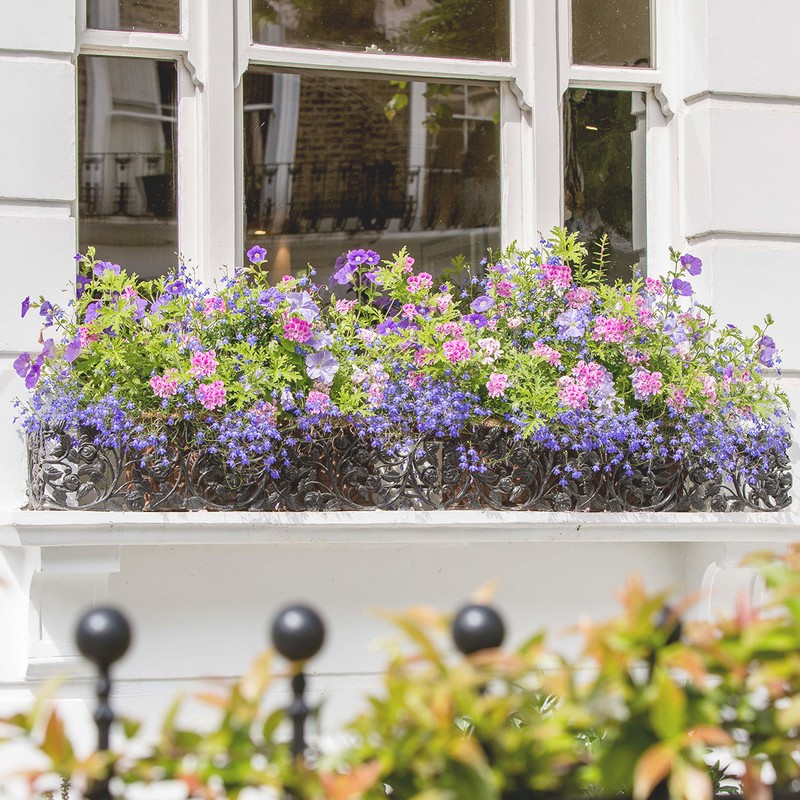How To Create Beautiful Window Boxes
Words: Georgina Blaskey
Nothing makes a house look well-dressed as a carefully-curated window box. Forget the geraniums of old with their twee and granny-ish connotations. Today’s window boxes are textured, layered, interesting plantscapes which add a final flourish to your property.
While artificial options are becoming more convincing, you can’t beat freshly planted flowers, with their fragrant scents and halo of buzzing bees. “For formality, evergreens are a classic option,” explains Chris Harrington, founder of Harrington Porter. “You can combine them with annuals for a smart scheme. Currently, the retro/boho look is going strong with petunias proving popular. For a modern city look, lavender works well but it can get quite leggy so you’ll need to change it out eventually.”
During the summer months, try pansies, violas, snap dragons, cosmos and salvias. Mini hydrangeas look luxe, and a mini herb garden is useful as well as interesting to look at. Henrietta Norman of Tulip Landscapes loves mixing colours. “The wild look is popular in summer, with a mass of colour and flowers. Bee-friendly salvias, long-flowering petunias and electric pink lychnis ‘Coronaria’ will give a long and vibrant display.”
In autumn, you can plant bulbs ready for spring, such as narcissi, daffodils and tulips, or for an instant hit, add some heather or skimmia. Come winter, cyclamen is popular and will flower throughout the cold months. In spring, if you’ve gone with bulbs, you’ll be enjoying a row of glorious tulips or daffodils; alliums in a row are a contemporary twist on window box planting.
“I really like texture rather than colour in a window box,” says Chris. “There are lots of different grasses with shades and tints, such as lime marmalade heuchera, which looks particularly good against railings and grey painted doors, and hakonechloa macra 'Aureola’ which has golden tips.” Succulents and ferns are also becoming more popular as shades and textures are more appealing to some than traditional colour schemes.
But don’t be under the illusion that this small garden addition requires equally small amounts of attention. “Mediterranean-style plants (lavender, rosemary, hebes and so on) need less than thirsty plants, such as hydrangeas,” says Henrietta. “But they all need the most help immediately after planting because they have no established root systems to look for water. Remember that they are in a confined space and very little rain finds its way into the soil, so water regularly.” Also remember to check for slugs and occasionally spray with insecticide and fungus-fighting formulas.
How to plant a window box: The Balcony Gardener’s step-by-step guide
1. Get the biggest container you can and make sure it has drainage holes.
2. Layer broken crockery or pebbles over the holes to help drainage.
3. Use good compost with moisture control for the container, such as Westland or John Innes. That should give you 3-4 months of fertilisation.
4. Plan your planting – consider aspect, purpose (eg a herb garden), colours and texture.
5. Put the plants (still in their pots) in the container to plan your scheme. Tallest work well at the back or in the middle with smaller at the front or either side.
6. Put the soil in the container; tease the roots out from plants that have been packed in tightly and then position in the soil and water.
DISCLAIMER: We endeavour to always credit the correct original source of every image we use. If you think a credit may be incorrect, please contact us at info@sheerluxe.com.


